A night spent convulsing on the floor is the best thing that’s ever happened to Circuit des Yeux
Haley Fohr talks about a non-religious spiritual awakening that changed her music and life
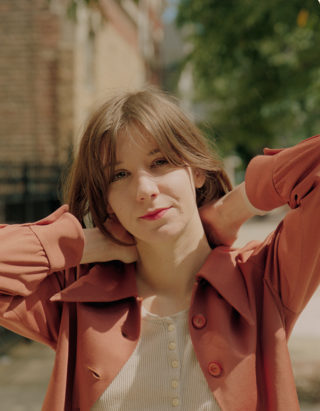
Haley Fohr talks about a non-religious spiritual awakening that changed her music and life
There’s a strange hum floating through the air in Berlin. Walking into the courtyard of the Kulturbrauerei old brewery the sound grows louder and more intense. The hum soon turns into a growling drone that appears to weave up and down; moving, shaking and quivering in tone, as you get ever closer to the whirr. The source of these strange sounds comes through two speakers stood next to a solitary giant black box. Inside the box, an anechoic chamber (a space without any echo), is Circuit des Yeux (Haley Fohr) who is performing in it three times a night as part of the city’s Pop-Kultur festival. Her shoes and phone sit neatly outside the box on the grass and inside she works in darkness and isolated silence, experimenting with her voice. The sounds brewed up reveal themselves in prolonged explorations, intertwining between controlled shrieks and quiet murmurs. Over the course of the 15-minute performance, layers are often added through effects pedals creating a trippy, indistinguishable sound that, once removed from the visual context of the performer, you begin to lose yourself in, forgetting who or where this all comes from.
“The idea came to me and two other girlfriends when we were tripping on LSD,” Fohr tells me the next day as we’re sat in the open courtyard of her hotel complex on a sunny August day. “I’m a little tired, so I’m going to wear these,” she says, as she puts on a pair of aviator sunglasses, leaving just enough of her eyes poking through to occasionally get a glimpse of her eye-liner, which is applied in short little dashes under her eyes, resembling a ‘cut here’ instruction from a food packet. “I read this interview with [American avant garde composer] Diamanda Galas about going to school and she mentioned the anechoic chambers they had there and how she would take LSD and go into these chambers and practise for hours and find her inner voice.”
Fohr, 28, has been writing, performing and searching for her own inner voice as Circuit des Yeux for a decade now. Originally from Indiana and now based in Chicago, she’s recently signed with Drag City after previously releasing records through Thrill Jockey and De Stijl. When not busy tripping on LSD and thinking up conceptual anechoic chamber projects to be built for festivals in Berlin, she also makes utterly singular music.
The music is driven by her distinctive voice – one that sits some-where between peak Patti Smith and experimental-period Scott Walker – and she creates music that blends esoteric folk, avant garde compositions, post-rock, ambient pop and contemp-orary minimalism. Her 2015 album, ‘In Plain Speech’, was a staggering achievement and in 2016 she gave herself a rest from the incredibly intense and personal project that Circuit des Yeux is and created the fictional character, Jackie Lynn, to live in for a brief while. She released a record under the name, creating a fictitious backdrop story about a cocaine-dealing cowgirl on the run.
The album was fun, almost breezy and light compared to the stark intensity of Circuit des Yeux, and it played with a tone that resembled Suicide making an experimental and contemporary country record. It was done in a brief amount of time, just days, and was always intended to fade into obscurity. The success of the album was not anticipated. Rave reviews were written and Fohr found herself on the front cover of Wire magazine even though she never even planned to do a single interview for the project. It should have never been anything more than a bit of fun, a diversion tactic to give her space to write songs for her upcoming album, ‘Reaching for Indigo’. “I’ve been developing these new songs over a couple of years and I wanted to take extra time with this record. I did Jackie Lynn to buy me more time but that broke off into a new world,” she says, looking back over the project, again dipping her sunglasses enough for her eyes to creep through and meet mine. “With Jackie Lynn I was just trying something out – I didn’t want to be the focal point of what I was doing. The traction was more than I expected – I wanted it to be one of these weird one-offs you’d find when digging through the back catalogue of an artist.”
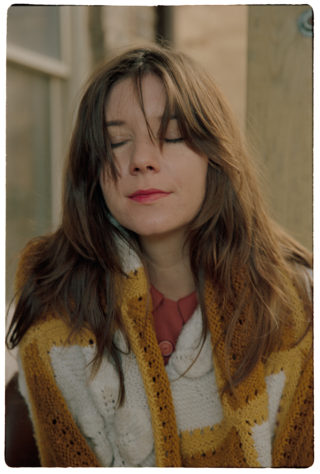
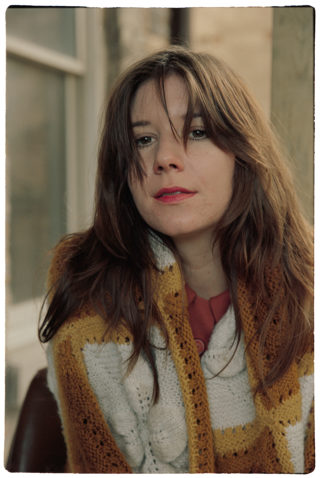
The difference between Jackie Lynn and Circuit des Yeux as creative outlets for Fohr is clear-cut and she seems somewhat disheartened that her fun, throwaway project recorded in a flash captured people’s imaginations as much as it did. “Circuit Des Yeux is one hundred percent me. Jackie Lyne was an experiment in entertainment… Circuit Des Yeux is one hundred percent artistry. When people would say, ‘I like Circuit des Yeux but I love Jackie Lynn,’ it’s hard not to be taken back by that… like, damn!”
What Jackie Lynn did do in Fohr’s favour was create breathing room for the songs included on ‘Reaching For Indigo’ to be created and fully realised. The end result is something that she is beaming about. “This album is my magnum opus, it’s been a long time coming, I’m pretty proud,” she says.
Fohr isn’t reserved in coming forward about the pride in her own accomplishments and it’s refreshing to see such self-assuredness and conviction coming from an artist who may usually be reserved a spot in the pile marked ‘weirdo underground experimental stuff’. Far from the stereotypical, shoe-gazing personalities that are often presumed behind such music, she has an air of confidence about her work that suggests she’s becoming exactly aware of how good she is. “Not to toot my own horn,” she says at one point when we are discussing an upcoming gig she is playing covering all of Nico’s ‘Chelsea Girl’, “but I’m a singular woman who is finding her voice and doing things like that is a way to celebrate that.”
She should be proud. ‘Reaching for Indigo’ is an album of remarkable beauty, craft and scope. It’s a record that feels dense and experimental but fluid and easily penetrable, leaving gaps of flowing electronics to get lost in and intricate and complex song craft to be stunned by. All of which, of course, is underpinned by Fohr’s voice, which feels utterly seamless in its goose bump-inducing ability. The production of the record hums with a warmth and sparkles with crystal clarity, always sounding infinitely more expensive than the DIY home studio set-up that made it. This decision was intentional, Fohr tells me. “In my career, my struggles have largely been financial and through those situations I’ve burrowed my way through in a DIY-style, which has been pretty freeing and has helped me develop my own style. I was offered multiple budgets and advances and large producers for this record but I took a step back and said, ‘this is not how I’ve done things.’ So I made a decision to do it entirely at home with Cooper Crain, who I’ve long worked with.” It’s so far removed from resembling what one might attribute to home recording quality that it’s almost unbelievable and Fohr is aware of the job that’s been done on it. “I think the sounds are incredibly sophisticated.”
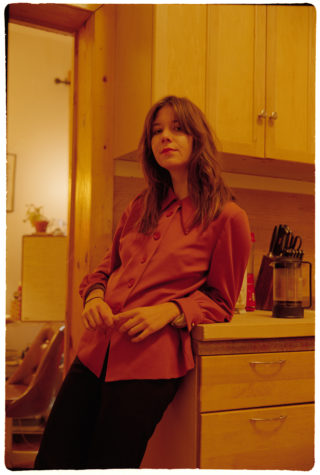
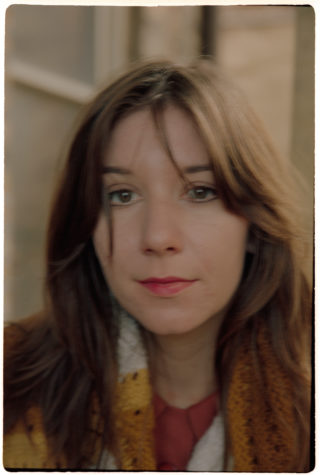
The gap that Jackie Lynn forced in the making of this record also allowed for something else to happen to Fohr on a much more personal level. A moment that has changed Fohr’s life and shaped this record irreversibly. “It was the night of January 22nd, 2016…” she begins to tell me as though winding up the beginning of a children’s story. “It came from intuition; it’s hard to describe. For whatever reason, in my life, great change has come through challenge – a tangible challenge, to overcome something. This time there was nothing pulling or pushing me, it came from within me.”
Fohr continues to plunge into this very unusual evening and moment with further muddy detail. “My life wasn’t terrible by any means but something really dark came down upon me and this new step happened in the process where things got so dark they combusted into this bright white light and I had this knowingness wash over me. I found this answer that I didn’t know I’d been searching for until I found it.” If this sounds confusingly vague, it’s because it’s something that cannot really be pinpointed or accurately described. It was something that happened both within and beyond Fohr; something switched, an eruptive moment of self realisation, a non-religious spiritual awakening; something happened to her body and mind. “It was both an internal and a physical thing. It was mostly internal but I was going through something spiritual. I was convulsing and vomiting and crying, it was really intense, it came out of nowhere, it was like somebody did this to me. It was really frightening.”
Despite the fear that drenched that moment as she laid writhing and convulsing on the floor. The end outcome is one of intense positivity.
“I think in life there are a lot of pivotal moments from 18-28 and for me they have come in really challenging, dark ways and this is the first one in which I had no sense of foresight. It was so uplifting and positive and I don’t know if another moment like that will come again, I really don’t. It’s changed who I am in a really profound way. Going dark in times of struggle is the easy way, for me anyway, but in pushing through and knowing that there could be something amazing that could happen at any moment, I’ll hold onto that forever.”
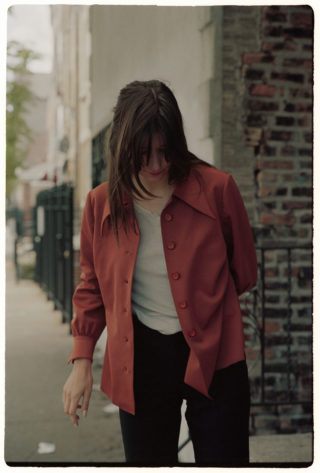
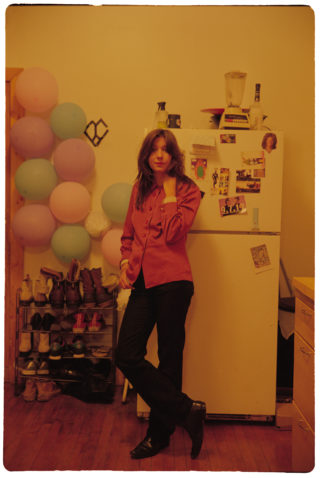
This period called for a bit of time away to reflect, which is exactly what Fohr did. “Right after that I moved out of my house and lived about an hour away in the north side of Chicago and spent a couple of months there and sort of just stared at a wall. It was really quiet and I just waited. After that a lot of things coalesced in this really beautiful way. Things in my personal and professional life, it was like I was riding this wave; it was effortless, it was beyond me. I also had this element of a heightened sense of colour for about eight months, reds and blues were really intense to see, I noticed the patterns on everything.” It was during this period that the album was primarily constructed, riding high upon a wave of the unexplainable.
For Fohr, Circuit des Yeux has been an ongoing sense of self-discovery, way beyond 2016’s episode. She and the project are so intrinsically linked to one another they share DNA and Fohr has, in many ways, found herself through this project. It has become an outlet for the true Haley Fohr to filter through, something that most potently manifests itself when she is playing live. “When I’m on stage performing,
I feel like that’s the only time in my life in which I’m one hundred percent me,” she says. “It took me a while to get to this stage and it’s such a vessel of freedom, I feel so empowered.”
The question that of course leads to is why? Or, perhaps more importantly, why doesn’t Fohr feel like she is herself unless she’s funnelling herself through the vessel that is Circuit des Yeux?
“For whatever reason, in the stage that I am in my life, there isn’t that much room for my narrative,” she says. “People have never really listened to me; I’m a quiet person, I sat in back of the class in school. I have a lot of ideas and thoughts but it takes a lot of energy trying to get them across to people.”
This is something Fohr feels is amplified given her age and gender. “Ageism is something that I really struggle with. I think young people have the most brilliant ideas in the world and people don’t honour them. I just remember those things and experiences really vividly and I still struggle today being a woman in a male dominated industry.” However, all of this has led to a period of overpowering self-belief and realisation of the infinite possibilities that exist when on stage. “All of that coalesces into a feeling of, ‘here I am up here on stage… nobody can fuck with me.’”